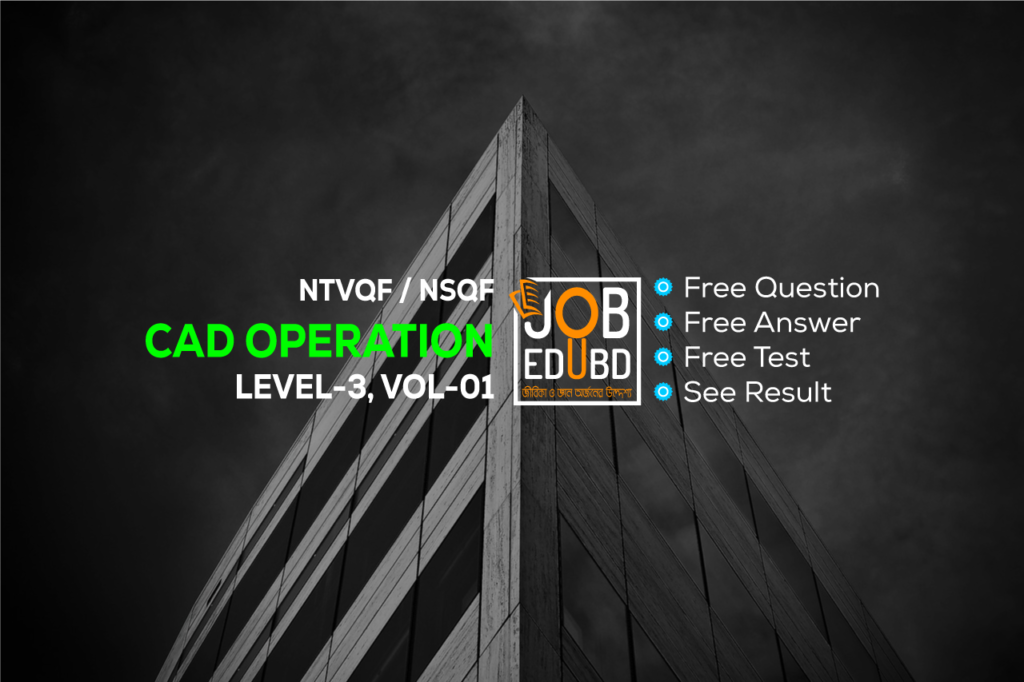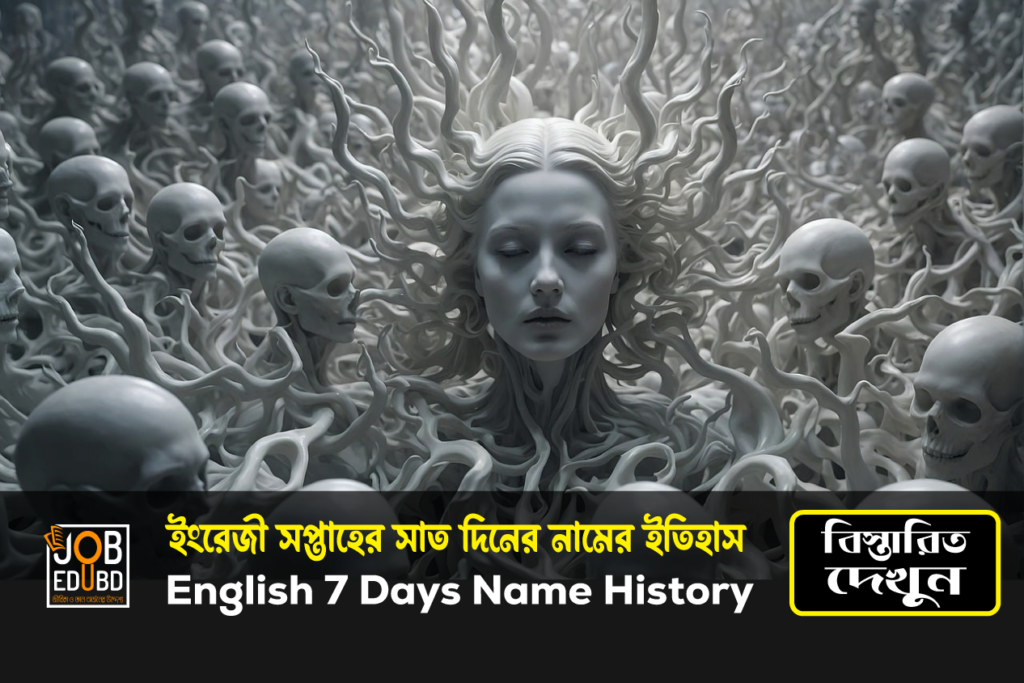Graphic Design Level-3 Suggestion V-12
Written Test Graphic Design Level-3 Suggestion V-12 by Job Edu BD
First, test yourself with the following MCQs, if you can’t do it, you can check the answer by clicking on the answer button.
Graphic Design level-3 Suggestion V-12
1. Which is the example of social media platform?
- Yahoo
- Yahoo
2. If you want to output your design, you must know the size of the paper used by the printing machine. In that case, what is the standard size of Double Demy paper?
- 17.75 x 22.5 in
- 22.5 x 35.5 in
- 20.2 x 40.4 in
- 30.2 x 40.4 in
3. What is a design brief in terms of vector design?
- A detailed document outlining project goals, audience, and specific requirements
- A narrative describing the conceptual story behind the design
- A marketing piece showcasing the design’s features and benefits
- A compiled list of unrelated tasks associated with the project
4. Which tool is used to control the path and create the connection between each anchor point?
- Pencil tool
- Blob brush tool
- Curvature
- Paintbrush
5. Kerning, tracking, and leading are the properties of which attributes?
- Paragraph
- Character
- Baseline shift
- Leading
6. The order in which the layers of an image organized is called
- composition order
- layer order
- stacking order
- none of the above
7. Combines all layer into a single background
- flattening
- combining
- rasterizing
- none of the above
8. which of the following is not a blending mode
- multiply
- luminance
- overlay
- crop
9. New files in photoshop is generally created with
- normal layers
- adjustment layers
- background layer
- none of the above
10. The negative area of space surrounding the columns of type is called the………….area,
- line
- margin
- grid
- none of them
11. The……color system is based on mixing color pigments.
- rgb
- cmyk
- additive
- subtactive
12. Which one of the following is the art Work of M.C Escher
- drawing hands
- melting clock
- sunflower
- Guernica
13. …………. is the presence of an element or a visual relationship that is unlike others that dominate a composition?
- contrast
- emphasis
- visual anomaly
- focal point
14. The………tool allows you to select a rectangular or circular area of a layer to change or delete.
- marquee
- crop
- hand
- Zoom
15. Rulers display on the……of the document window.
- bottom side
- top and right sides
- top and left sides
- bottom and right sides
16. ppi stand for…….
17. CMYK inks are also called
18. CMYK stands for…
19. which of the following colours are also called subtractive colours?
20. For print production the most appropriate cołour mode is
21. What is the purpose of Occupational Safety and Health (OSH) procedures in the IT workplace?
22. Write down 4 basic formulas in of excel.
23. What is the benefit of using Smart Objects in image composition?
24. What are guides in terms of vector design?
25. What is TIFF in terms of saving digital design?
1. Which is the example of social media platform?
A. LinkedIn
2. If you want to output your design, you must know the size of the paper used by the printing machine. In that case, what is the standard size of Double Demy paper?
B. 22.5 x 35.5 in
3. What is a design brief in terms of vector design?
B. A narrative describing the conceptual story behind the design
4. Which tool is used to control the path and create the connection between each anchor point?
C. Curvature
5. Kerning, tracking, and leading are the properties of which attributes?
B. Character
6. The order in which the layers of an image organized is called
C. stacking order
7. combines all layer into a single background
A. flattening
8. which of the following is not a blending mode
D. crop
9. New files in photoshop is generally created with
C. background layer
10. The negative area of space surrounding the columns of type is called the………….area,
B. margin
11. The……color system is based on mixing color pigments.
D. subtactive
12. Which one of the following is the art Work of M.C Escher
A. drawing hands
13. …………. is the presence of an element or a visual relationship that is unlike others that dominate a composition?
C. visual anomaly
14. The………tool allows you to select a rectangular or circular area of a layer to change or delete.
A. marquee
15. Rulers display on the……of the document window.
B. top and left sides
16. ppi stand for…….
Ans: pixels per inch
17. CMYK inks are also called
Ans: printing colors
18. CMYK stands for…
Ans: cyan magenta yellow black
19. which of the following colours are also called subtractive colours?
Ans: cmyk
20. For print production the most appropriate cołour mode is
Ans: cmyk
21. What is the purpose of Occupational Safety and Health (OSH) procedures in the IT workplace?
Hints: To ensure the safety and well-being of employees by preventing workplace injuries and illnesses through proper guidelines and practices.
22. Write down 4 basic formulas in of excel.
Hints: SUM, MAX, MIN, IF, AVERAGE, AVERAGEA, RANK, COUNT, INT, COUNTA
23. What is the benefit of using Smart Objects in image composition?
Hints: To maintain the original quality of the image when making edits.
24. What are guides in terms of vector design?
Hints: Guides help you align text and graphic objects. You can create ruler guides (straight vertical or horizontal lines) and guide objects (vector objects that you convert to guides).
25. What is TIFF in terms of saving digital design?
Hints: TIFF Image file or Tagged Image File Format is a lossless raster image format with high quality, this makes TIFF images really popular in photography and desktop publishing.

MD. SALAHUDDIN
CSE, BUBT
In-Charge (Graphic Design)
Instructor
Bangladesh-German Technical Training Center
Mirpur-2, Dhaka-1216
Graphic Design Level-3 Suggestion V-3
"You will pass just by asking the mentioned questions, it's not like that at all, but chances are upto 80% to get common. This is just a suggestion. This question is not copied from any board question"
Related Post
Graphic design is a profession,[2] academic discipline[3][4][5] and applied art whose activity consists in projecting visual communications intended to transmit specific messages to social groups, with specific objectives.[6] Graphic design is an interdisciplinary branch of design[1] and of the fine arts. Its practice involves creativity, innovation and lateral thinking using manual or digital tools, where it is usual to use text and graphics to communicate visually.
The role of the graphic designer in the communication process is that of the encoder or interpreter of the message. They work on the interpretation, ordering, and presentation of visual messages. Usually, graphic design uses the aesthetics of typography and the compositional arrangement of the text, ornamentation, and imagery to convey ideas, feelings, and attitudes beyond what language alone expresses. The design work can be based on a customer’s demand, a demand that ends up being established linguistically, either orally or in writing, that is, that graphic design transforms a linguistic message into a graphic manifestation.[7]
Graphic design has, as a field of application, different areas of knowledge focused on any visual communication system. For example, it can be applied in advertising strategies, or it can also be applied in the aviation world[8] or space exploration.[9][10] In this sense, in some countries graphic design is related as only associated with the production of sketches and drawings, this is incorrect, since visual communication is a small part of a huge range of types and classes where it can be applied.
COPY
Graphic design has, as a field of application, different areas of knowledge focused on any visual communication system. For example, it can be applied in advertising strategies, or it can also be applied in the aviation world[8] or space exploration.[9][10] In this sense, in some countries graphic design is related as only associated with the production of sketches and drawings, this is incorrect, since visual communication is a small part of a huge range of types and classes where it can be applied.
With origins in Antiquity and the Middle Ages,[11] graphic design as applied art was initially linked to the boom of the rise of printing in Europe in the 15th century and the growth of consumer culture in the Industrial Revolution. From there it emerged as a distinct profession in the West, closely associated with advertising in the 19th century[12] and its evolution allowed its consolidation in the 20th century. Given the rapid and massive growth in information exchange today, the demand for experienced designers is greater than ever, particularly because of the development of new technologies and the need to pay attention to human factors beyond the competence of the engineers who develop them.[13]
History: In both its lengthy history and in the relatively recent explosion of visual communication in the 20th and 21st centuries, the distinction between advertising, art, graphic design and fine art has disappeared. They share many elements, theories, principles, practices, languages and sometimes the same benefactor or client. In advertising, the ultimate objective is the sale of goods and services. In graphic design, “the essence is to give order to information, form to ideas, expression, and feeling to artifacts that document the human experience.”[17]
The definition of the graphic designer profession is relatively recent concerning its preparation, activity, and objectives. Although there is no consensus on an exact date when graphic design emerged, some date it back to the Interwar period. Others understand that it began to be identified as such by the late 19th century.[11]
It can be argued that graphic communications with specific purposes have their origins in Paleolithic cave paintings and the birth of written language in the third millennium BCE. However, the differences in working methods, auxiliary sciences, and required training are such that it is not possible to clearly identify the current graphic designer with prehistoric man, the 15th-century xylographer, or the lithographer of 1890.
The diversity of opinions stems from some considering any graphic manifestation as a product of graphic design, while others only recognize those that arise as a result of the application of an industrial production model—visual manifestations that have been “projected” to address various needs: productive, symbolic, ergonomic, contextual, among others.
Nevertheless, the evolution of graphic design as a practice and profession has been closely linked to technological innovations, social needs, and the visual imagination of professionals.[18] Graphic design has been practiced in various forms throughout history; in fact, good examples of graphic design date back to manuscripts from ancient China, Egypt, and Greece. As printing and book production developed in the 15th century, advances in graphic design continued over the subsequent centuries, with composers or typographers often designing pages according to established type.[11]
By the late 19th century, graphic design emerged as a distinct profession in the West, partly due to the process of labor specialization that occurred there and partly due to the new technologies and business possibilities brought about by the Industrial Revolution. New production methods led to the separation of the design of a communication medium (such as a poster) from its actual production. Increasingly, throughout the 19th and early 20th centuries, advertising agencies, book publishers, and magazines hired art directors who organized all visual elements of communication and integrated them into a harmonious whole, creating an expression appropriate to the content. In 1922, typographer William A. Dwiggins coined the term graphic design to identify the emerging field.[11]
Throughout the 20th century, the technology available to designers continued to advance rapidly, as did the artistic and commercial possibilities of design. The profession expanded greatly, and graphic designers created, among other things, magazine pages, book covers, posters, CD covers, postage stamps, packaging, brands, signs, advertisements, kinetic titles for TV programs and movies, and websites. By the early 21st century, graphic design had become a global profession as advanced technology and industry spread worldwide.[11]
Graphic design can have many applications, from road signs to technical schematics and reference manuals. It is often used in branding products and elements of company identity such as logos, colors, packaging, labelling and text.
From scientific journals to news reporting, the presentation of opinions and facts is often improved with graphics and thoughtful compositions of visual information – known as information design. With the advent of the web, information designers with experience in interactive tools are increasingly used to illustrate the background to news stories. Information design can include Data and information visualization, which involves using programs to interpret and form data into a visually compelling presentation, and can be tied in with information graphics.
Skill: A graphic design project may involve the creative presentation of existing text, ornament, and images.
The “process school” is concerned with communication; it highlights the channels and media through which messages are transmitted and by which senders and receivers encode and decode these messages. The semiotic school treats a message as a construction of signs which through interaction with receivers, produces meaning; communication as an agent.[citation needed]
Typography
Typography includes type design, modifying type glyphs and arranging type. Type glyphs (characters) are created and modified using illustration techniques. Type arrangement is the selection of typefaces, point size, tracking (the space between all characters used), kerning (the space between two specific characters) and leading (line spacing).
Typography is performed by typesetters, compositors, typographers, graphic artists, art directors, and clerical workers. Until the digital age, typography was a specialized occupation. Certain fonts communicate or resemble stereotypical notions. For example, the 1942 Report is a font which types text akin to a typewriter or a vintage report.[36]
From Wikipedia, the free encyclopedia
Post review
Finding Your Post
Graphic Design Level-3 Suggestion V-10 NSQF / NTVQF CAD Operation Level-3 Suggestion V-4, NSQF NTVQF, CAD Operation Level-3 Suggestion V-4, Job Edu BD, NSQF NTVQF NSDA BTEB Suggestion Vol-1
Graphic Design Level-3 Suggestion V-10 NSQF / NTVQF CAD Operation Level-3 Suggestion V-4, NSQF NTVQF, CAD Operation Level-3 Suggestion V-4, Job Edu BD, NSQF NTVQF NSDA BTEB Suggestion Vol-1 NSQF NTVQF NADA BTEB Graphic Design Level-3 Suggestion V-10
Graphic Design Level-3 Suggestion V-10 NSQF / NTVQF CAD Operation Level-3 Suggestion V-4, NSQF NTVQF, CAD Operation Level-3 Suggestion V-4, Job Edu BD, NSQF NTVQF NSDA BTEB Suggestion Vol-1 NSQF NTVQF NADA BTEB Graphic Design Level-3 Suggestion V-10







